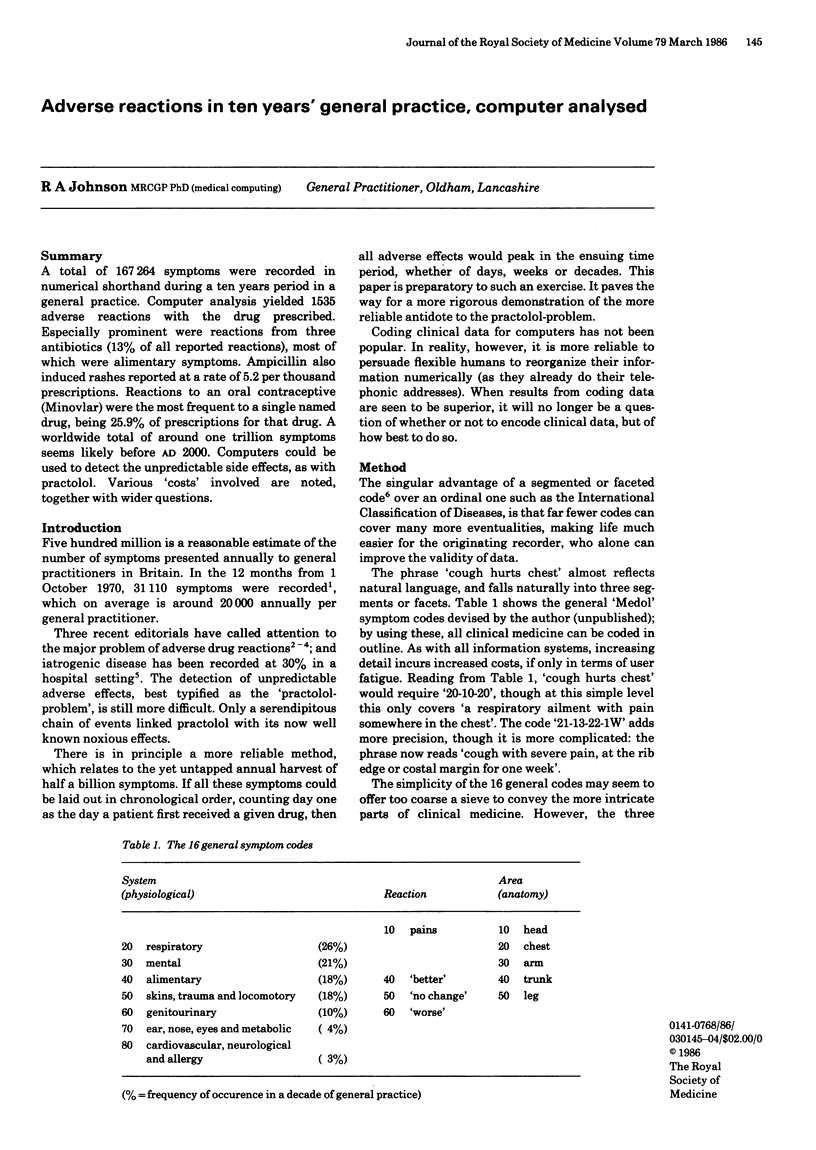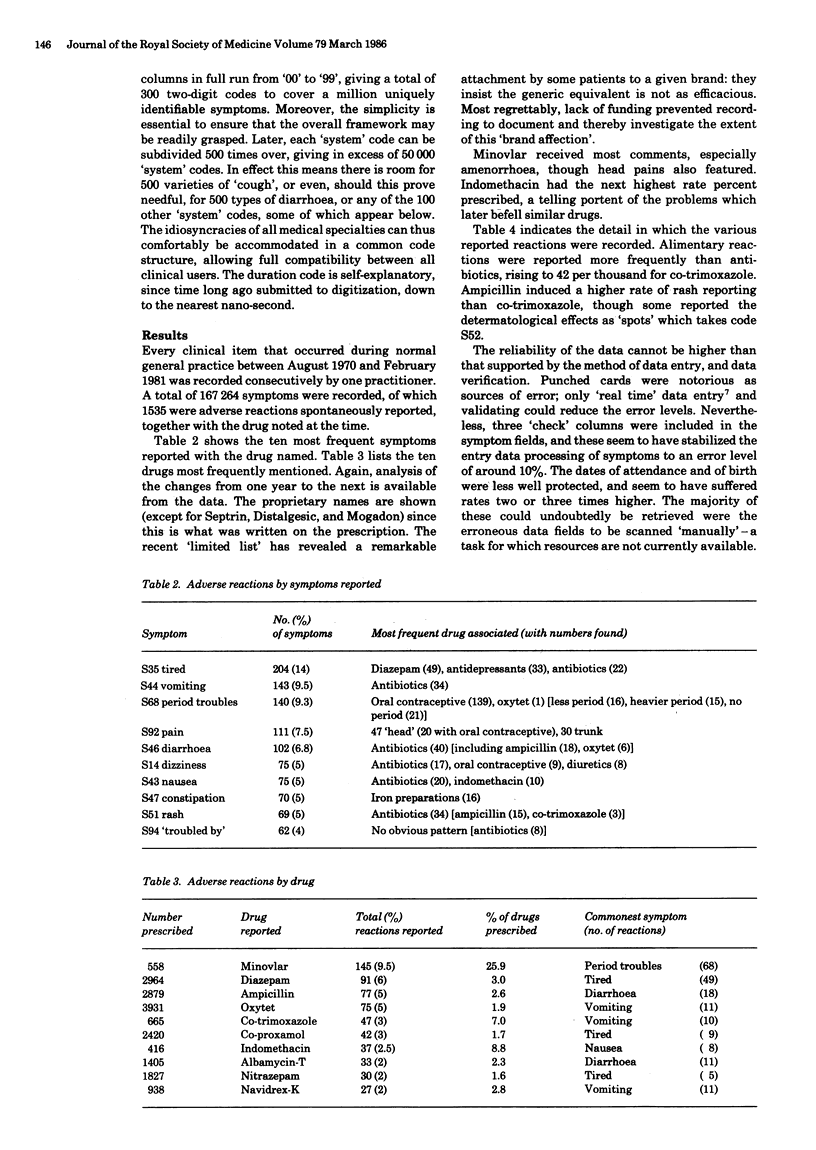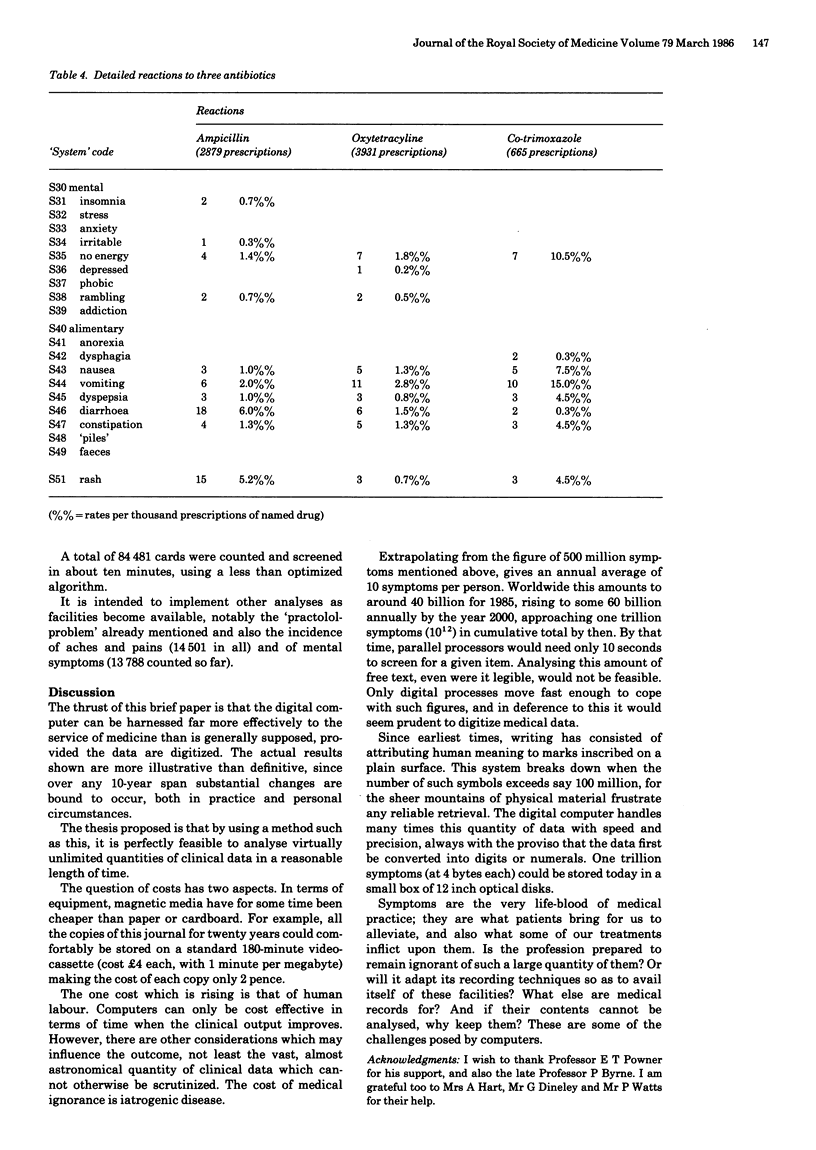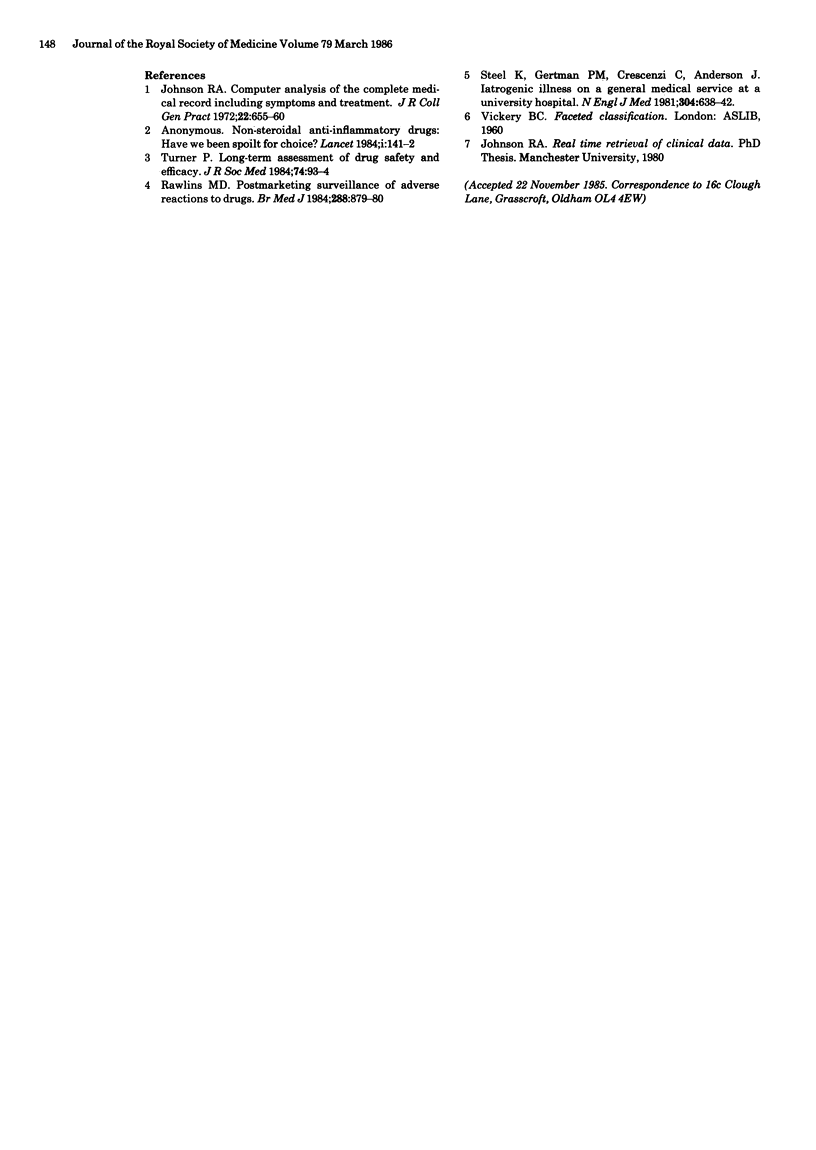Abstract
A total of 167 264 symptoms were recorded in numerical shorthand during a ten years period in a general practice. Computer analysis yielded 1535 adverse reactions with the drug prescribed. Especially prominent were reactions from three antibiotics (13% of all reported reactions), most of which were alimentary symptoms. Ampicillin also induced rashes reported at a rate of 5.2 per thousand prescriptions. Reactions to an oral contraceptive (Minovlar) were the most frequent to a single named drug, being 25.9% of prescriptions for that drug. A worldwide total of around one trillion symptoms seems likely before AD 2000. Computers could be used to detect the unpredictable side effects, as with practolol. Various 'costs' involved are noted, together with wider questions.
Full text
PDF



Selected References
These references are in PubMed. This may not be the complete list of references from this article.
- Johnson R. A. Computer analysis of the complete medical record, including symptoms and treatment. J R Coll Gen Pract. 1972 Oct;22(123):655–660. [PMC free article] [PubMed] [Google Scholar]
- Rawlins M. D. Postmarketing surveillance of adverse reactions to drugs. Br Med J (Clin Res Ed) 1984 Mar 24;288(6421):879–880. doi: 10.1136/bmj.288.6421.879. [DOI] [PMC free article] [PubMed] [Google Scholar]
- Steel K., Gertman P. M., Crescenzi C., Anderson J. Iatrogenic illness on a general medical service at a university hospital. N Engl J Med. 1981 Mar 12;304(11):638–642. doi: 10.1056/NEJM198103123041104. [DOI] [PubMed] [Google Scholar]
- Turner P. Long-term assessment of drug safety and efficacy. J R Soc Med. 1984 Feb;77(2):93–94. doi: 10.1177/014107688407700201. [DOI] [PMC free article] [PubMed] [Google Scholar]


